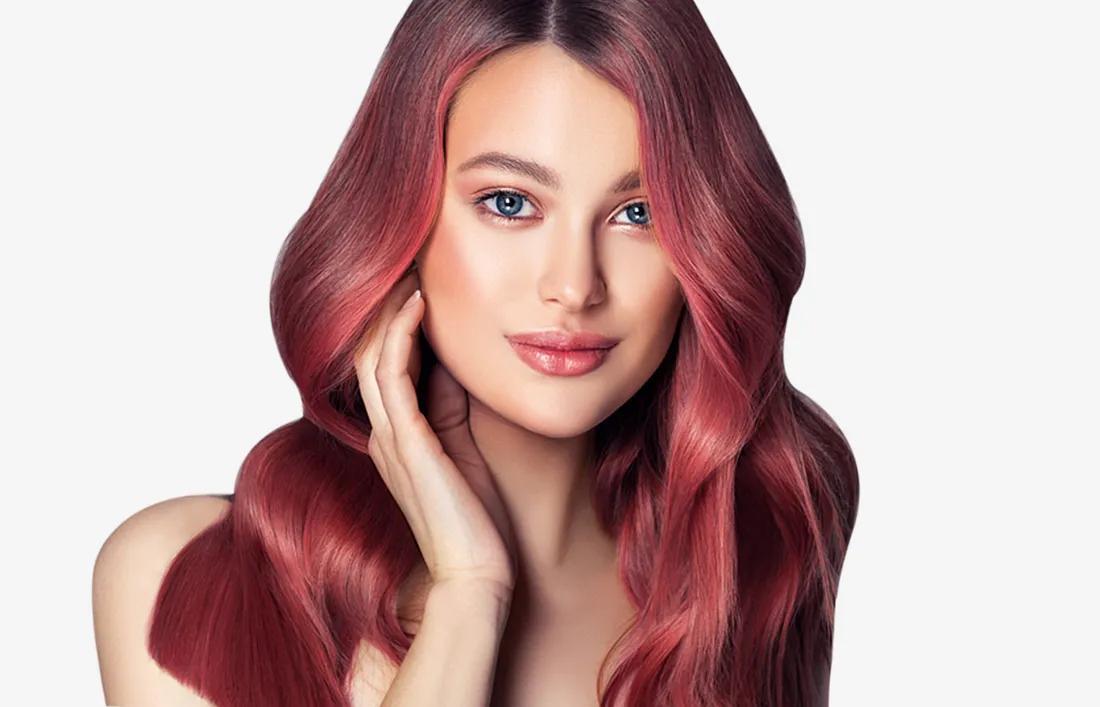Scan for
Download the App
Scan for
Download the App


Hair colouring has become a popular way to express individuality and enhance one’s appearance. Whether you’re looking for a subtle change or a bold transformation, hair colouring offers a wide range of options. However, many questions arise when it comes to dyeing hair. Does hair colouring damage the quality of your hair? How should you care for coloured hair? In this article, we will delve into the world of hair colouring, addressing these questions and providing you with all the information you need to know.

Hair colouring involves the process of changing the natural color of your hair using hair dye or pigments. It can be done to cover gray hair, create highlights or lowlights, or completely transform the hair color. Hair dye products contain chemicals that penetrate the hair shaft and alter the natural pigments present in the hair strands.
Hair colouring works by a chemical reaction between the hair dye and the natural pigments present in the hair shaft. The hair dye contains molecules that are small enough to penetrate the cuticle and reach the cortex of the hair. Once inside the cortex, these molecules react with the natural pigments, either removing them or depositing new color molecules.
Permanent hair color is long-lasting and provides full coverage. It contains ammonia and oxidative dyes that penetrate the hair cuticle, permanently changing the hair color. This type of hair color requires regular root touch-ups as new hair growth occurs.
Semi-permanent hair color coats the hair shaft but does not penetrate the cuticle. It gradually fades over time with each shampoo. This type of hair color is ideal for experimenting with different shades or adding temporary color to your hair.

Demi-permanent hair color falls between permanent and semi-permanent hair color. It partially penetrates the hair cuticle, resulting in longer-lasting color than semi-permanent options. It is often used to enhance natural hair color or add depth and shine.
Temporary hair color is the most temporary option and does not penetrate the hair shaft. It typically comes in the form of sprays, gels, or powders and can be easily washed out with shampoo. Temporary hair color is great for special occasions or trying out vibrant colors without commitment.
When choosing a hair color, it’s essential to consider various factors to achieve the desired outcome. Here are some key considerations:
Your skin tone and undertones play a crucial role in determining which hair color will complement your complexion. Cool undertones work well with ash blonde or cool brown shades, while warm undertones pair nicely with golden or reddish hues.
Your eye color can also guide you in selecting a hair color that will enhance your features. For example, warm hair colors like copper or golden blonde can make blue eyes pop, while cool shades like espresso or jet black can intensify brown eyes.

Ultimately, your personal style and preference should guide your hair color choice. Consider your lifestyle, the level of maintenance you’re willing to commit to, and whether you want a subtle or dramatic change.
Before diving into hair colouring, it’s essential to prepare your hair and perform a patch test to check for any potential allergic reactions.
Performing a patch test is crucial to identify any adverse reactions to the hair dye. Apply a small amount of the hair dye mixture to a patch of skin behind your ear or on your inner elbow. Follow the instructions provided by the manufacturer and observe the area for any signs of irritation or redness.

To achieve the best hair colouring results, ensure that your hair is in good condition before the process. Deep condition your hair a week prior to the appointment, avoid washing your hair on the day of colouring, and ensure your hair is free from any styling product buildup.
The hair colouring process can be done at home or by a professional in a salon. Consider the following aspects for a successful hair colouring experience.
If you’re an experienced DIYer and aiming for a subtle change, you can opt to dye your hair at home. However, for significant transformations or if you’re unsure about the process, it’s advisable to visit a professional hair salon. They have the expertise to achieve desired results while minimizing the risk of hair damage.
Depending on the desired outcome, different application techniques can be used during the hair colouring process. These techniques include all-over color, highlights, lowlights, ombre, balayage, and many more. Each technique creates a unique effect, and it’s best to consult with a professional to determine which technique will suit you.

The hair dye’s development time varies depending on the product and desired shade. Follow the instructions provided by the manufacturer, as leaving the hair dye on for too long or rinsing it off too early can lead to undesirable results.
Proper hair care is essential to maintain the vibrancy and health of your coloured hair. Follow these tips to ensure your hair stays beautiful and vibrant.
Use a color-safe shampoo and conditioner specifically formulated for coloured hair. Avoid washing your hair too frequently, as it can strip the color. Opt for lukewarm water instead of hot water, as hot water can fade the hair color faster.

Coloured hair tends to be drier and more prone to damage. Use deep conditioning treatments and hair masks regularly to nourish and moisturize your hair. Look for products that contain ingredients like argan oil or shea butter to provide hydration and restore the hair’s vitality.
The sun’s UV rays can cause the hair color to fade and become dull. Protect your hair by wearing hats or using hair products with UV filters. Additionally, consider applying a leave-in conditioner or hair serum with SPF to shield your hair from the sun’s harmful effects.
To ensure a successful hair colouring experience, avoid the following common mistakes:
Overprocessing occurs when you leave the hair dye on for too long or use harsh chemicals excessively. This can lead to hair damage, breakage, and an unnatural color outcome. Always follow the recommended processing time and avoid overlapping the dye on previously colored hair.
Selecting the wrong shade can result in an unflattering hair color that doesn’t complement your skin tone or features. Consult with a professional colorist or use virtual hair color tools to visualize how different shades will look on you before making a decision.
Aftercare is crucial to maintaining the vibrancy and longevity of your hair color. Use color-safe hair care products, avoid heat-styling tools that can fade the color, and schedule regular touch-ups to prevent roots from showing.

Hair colouring has both advantages and disadvantages. Consider these factors before deciding to dye your hair:
There are several myths surrounding hair colouring that need to be debunked:
Hair colouring does not directly cause hair loss. However, excessive or improper use of hair dye can lead to hair damage, breakage, and thinning. It’s important to follow proper hair colouring techniques and take care of your hair to minimize the risk of damage.
While hair colouring can potentially damage the hair if done incorrectly, it is possible to maintain healthy hair even with colour-treated locks. Proper hair care, regular deep conditioning treatments, and professional salon visits can help minimize damage and maintain the integrity of your hair.
Hair colouring is not limited to any age group. People of all ages can choose to dye their hair to enhance their appearance or cover gray hair. The key is to select the right hair color that suits your style and preferences.
Hair colouring allows you to transform your look and express your personality. By understanding the different types of hair colour, the process, and proper aftercare, you can achieve beautiful and vibrant results. Whether you choose a subtle change or a bold transformation, remember to consult with a professional or follow instructions carefully when dyeing your hair at home. Embrace the world of hair colouring and enjoy the versatility it brings to your style.
Yes, you can dye your hair at home using hair dye kits available in the market. However, for complex or drastic color changes, it’s advisable to seek professional help.
The duration of hair color varies depending on the type of hair dye used. Permanent hair color lasts until the hair grows out, while semi-permanent and temporary colors fade gradually with each wash.
Hair color can potentially damage your hair if used improperly or excessively. It’s crucial to follow instructions, use quality products, and take proper care of your colored hair to minimize damage.
Yes, it is possible to go back to your natural hair color after dyeing. You can either wait for the color to fade or consult a professional colorist for color correction or hair color removal treatments.
Henna is a natural and safe alternative for hair coloring. It provides a reddish-brown hue and also nourishes the hair. However, be cautious when using henna products with added chemicals, as they may not be as safe or natural.